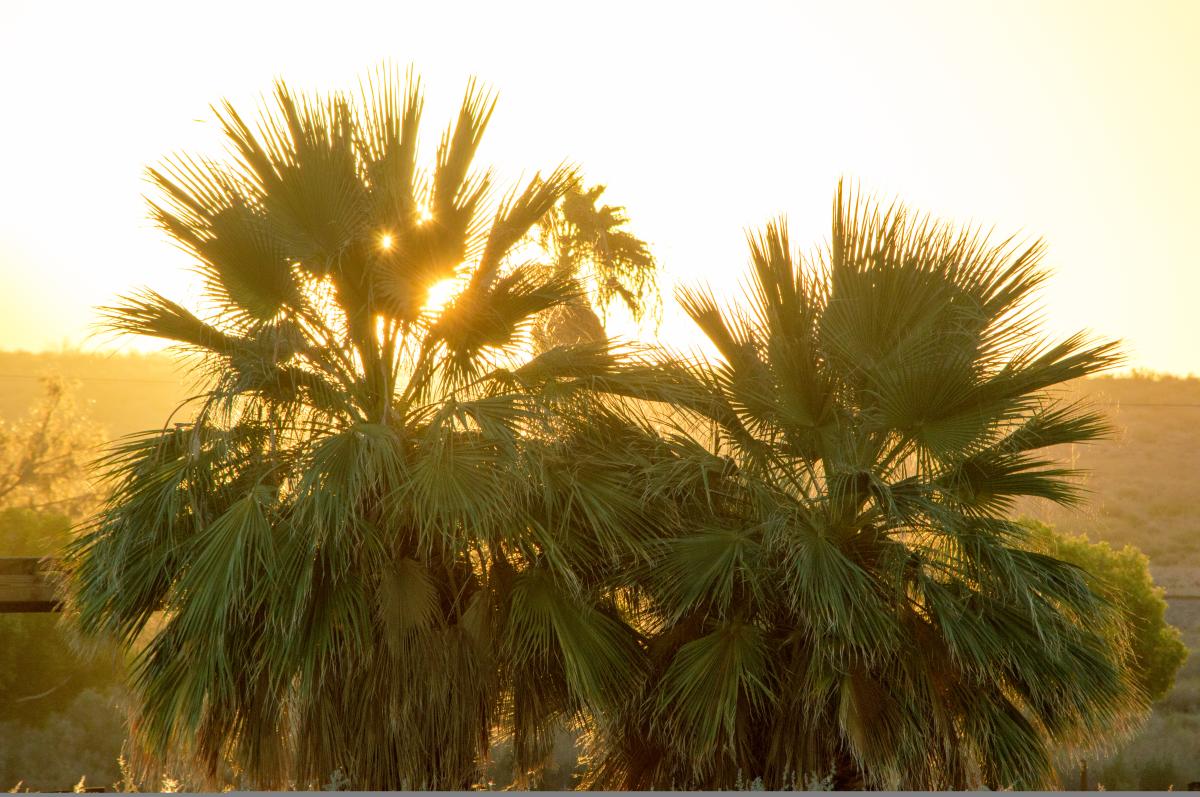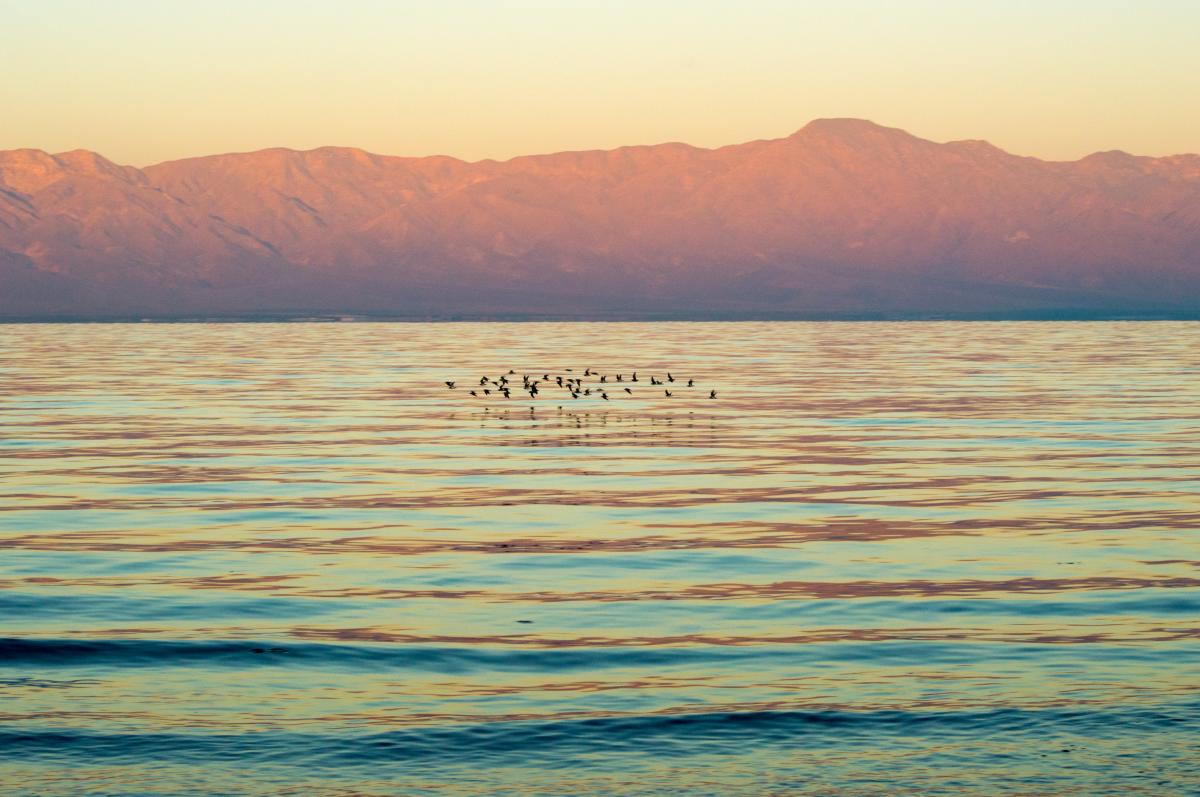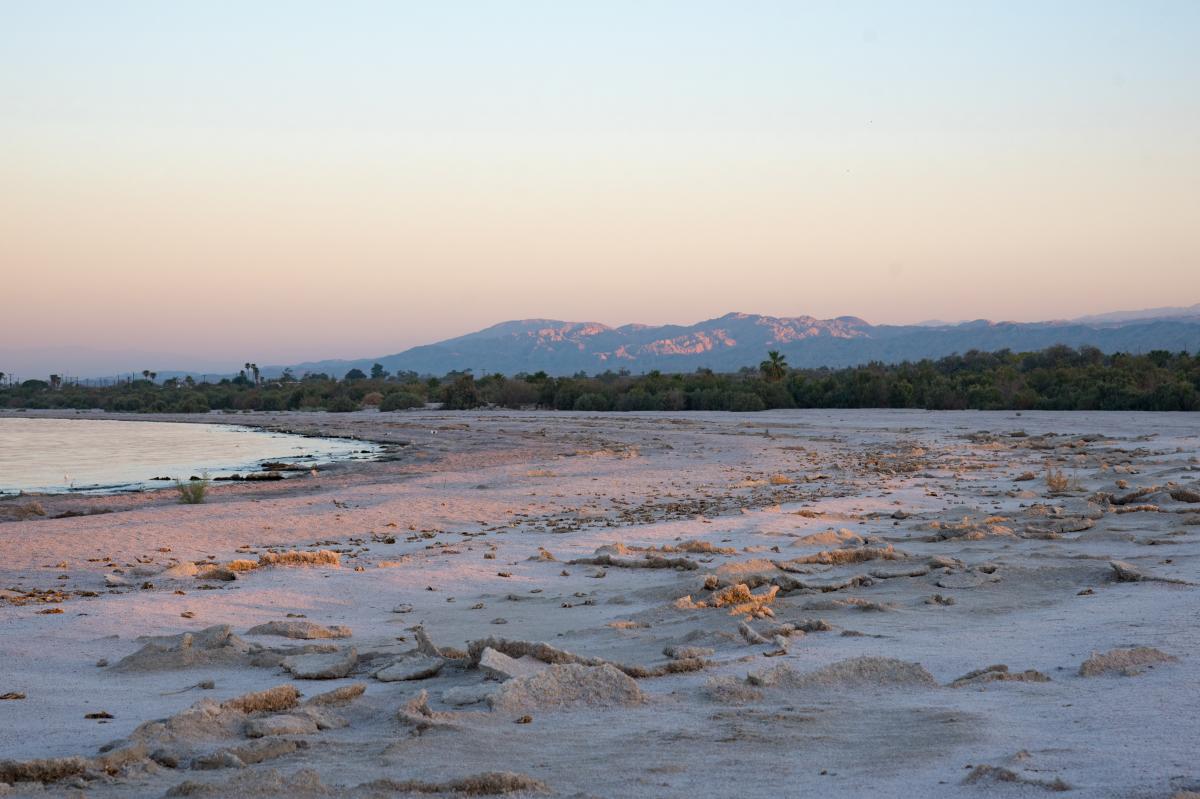Salton Sea
Finding a “sea” in the middle of the sweeping desert might seem like a mirage, but the Salton Sea is very real. The massive and intriguing body of water—really a huge lake—is found just east of Greater Palm Springs and makes for a fascinating day trip. As you tour the area surrounding the 115 miles of shoreline, you’ll uncover myriad discoveries, from remnants of its glory days as a Hollywood playground to migrating birds that break the stillness of the water. You may even discover some surprising oddities—from bubbling mud pots to an internationally known “museum.” Plan a leisurely drive and bring along a sense of adventure while you “circle the Sea”—California’s largest lake.
Date Shakes & Oranges
Follow Highway 86 as it departs Indio and begins to reveal lush groves of date palms and citrus groves that fill the open desert leading to the west shore of the Salton Sea. It is a glimpse of how the entire Coachella Valley may have looked in the early 1900s with views of green, bushy citrus trees, limbs dripping in oranges and lemons and palms silhouetted against the hills.

The arrival of the first date palm from the Middle East in the 1890s brought about large-scale date farming in California. No place does it better than the Coachella Valley, where date farms line the agricultural byways. Thermal is home to the valley’s largest Medjool date crop, with informal fruit and produce stands dotting the stretch of highway between Thermal and the Salton Sea. Plan time to stop for a date shake, a whipped ice cream and chopped date concoction that will put you set the stage for the interesting adventures ahead.
West Shore & Southern Tip | Salton Sea

The west shore is populated by just a few stops, including a small chamber of commerce visitor’s center. Continue south towards Calexico, veering east at Westmoreland, nestled within the fertile Imperial Valley, to reach the Sonny Bono Salton Sea National Wildlife Refuge on the southern tip of the lake. The 2,200-acre wildlife refuge, just 40 miles north of the Mexican border, is your first stop before cutting over to the east shoreline that connects with Highway 111 and continues all the way to Mecca, then back to Indio.
The Sonny Bono Salton Sea National Wildlife Refuge was named to honor the late celebrity politician after his untimely death, however, the refuge was first established in 1930 by President Herbert Hoover. Located along the important course of the Pacific Flyway, the refuge’s feathered visitors have learned to adapt to the changing face of the Salton Sea—from the water’s salinity to shrinking marshland.

Today, thousands of waterfowl and other birds spend the winter at the refuge, including some endangered species such as the Yuma clapper rail. You may spot white pelicans basking in the setting sun, yellow-footed gulls or black-bellied plovers; more than 70 percent of the California Burrowing Owl population is found within the Salton Sea’s ecosystem. Bring your binoculars and climb the observation tower here or enjoy an easy hike on trails leading from the visitor center.

Your next stop is harder to find, but worth the trouble. The amazing Mud Volcanoes and Mud Ponds have been formed by geothermal seismic activity, complete with gurgling mud pots and mini volcanic motion that radiates serious heat. To experience this phenomenon, drive straight on Sinclair from the refuge center a few miles before linking to Highway 111, going north. Located about nine miles through the town of Niland is Davis Road. The road leading to the seismic area is paved for a half mile, but just past the paved portion is a sign for the Imperial Wildlife Area, Fish Ponds and Mud Pots. The Mud Volcanoes, on private property, are reached by going back to Davis Road, and turning right to the intersection of Davis and Scrimpf roads.
East Shore | Salton Sea

As you begin to circle up to the Salton Sea’s the East Shore, your next stop was actually declared a national treasure by the Congressional Record of the United States after Senator Barbara Boxer described it as “a unique and visionary sculpture.” Salvation Mountain is unlike any other outdoor art installation you are apt to see. The colorful creation by the late Leonard Knight is part mural, part Bible verses and totally folk art, made from adobe, straw and paint. Since Knight’s death in 2014, volunteers have maintained the site, and a charity has been established to support its future care.
Adjacent to the Mountain is a community known as Slab City, often referred to as one of the last free cities in America. The abandoned Marine facility that hosts remnant slabs from the original base is home to winter inhabitants who are mostly retirees as well as some fulltime residents that relish life “off the grid.” Makeshift campsites, a library and even a nightclub and golf course in pure desert fill the large expanse that was once Camp Dunlap.
North Shore | Salton Sea
Heading further up the shoreline toward Mecca, is the Salton Sea that many remember from its resort heyday--Bombay Beach. Guests swam, golfed and waterskied all day and partied at night at the Yacht Club. The beach, once populated by celebrities, now reveals sad remnants of days gone by—from fish carcasses to abandoned piers. Further up the northern coast, the restored North Shore Yacht Club is now a community center that represents a bright spot in the faded scenery.
Nine miles before Mecca, is a world-famous phenomenon—the International Banana Museum. The museum that was born out of owner/curator Fred Garbutt’s need to “collect” is one of a kind. With more than 20,000 banana-related items—from toys to books—the museum is a bright yellow salute to the fruit in every conceivable way. You can even celebrate with a banana split—if you haven’t indulged on too many date shakes along the way!
Photo courtesy of Laura Hunt Little


















